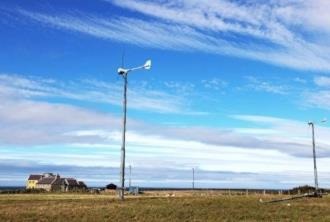By Adam Varenhorst
Although Dectes stem borers are more of an issue in South Dakota sunflower, they can also infest soybean. Most of the reports of Dectes stem borer in soybean originate from the southeast portion of the state. In soybean, Dectes stem borer larvae may cause yield losses due to their feeding activity in the pith of the stem and also due to late-season lodging.
Each infested stem will have only one Dectes larva present, because they are cannibalistic. During the season, the larva will feed in the pith, which will reduce the movement of water and nutrients in the plant. In soybean fields that have large infestations, this activity can lead to seven to 12% yield losses. During the end of season, the larva that is in the stem will move down and girdle the stem approximately two inches above the soil surface. The larva will then create an overwintering cell by closing off the stem where the girdling occurred. This feeding will cause the plant to lodge and ensure that the larva can easily emerge in the spring. Extensive lodging can lead to significant yield losses. Dectes stem borer hosts include soybean, sunflower, cocklebur and giant ragweed.

Figure 1. Dectes stem borer adult.
Identification
Adult Dectes stem borers are light gray and approximately 3/8 of an inch long. They have long antennae with segments that alternate gray and black in color (Figure 1). The larvae are cream-colored and often are referred to as having an accordion-shaped body (Figure 2). The larvae range from ½ to 5/8 of an inch long. The larvae observed in soybean stems will be smaller than those observed in sunflower stems.

Figure 2. Dectes stem borer larva in soybean stem.
Management
Due to the prolonged emergence of adult Dectes stem borers in July, it is not possible to effectively reduce populations using foliar insecticides. Dectes stem borer infestations may be worse in no-till soybean. Tillage disrupts the stem by either burying it or ensuring that the larvae are exposed to freezing temperatures. For no-till fields, vertical tillage may be an option to disrupt the larvae while having minimal impact on the no-till field. Another strategy for reducing infestations is to avoid planting soybean in an area where Dectes stem borer were a problem during the previous year. It’s also important to reduce the weedy hosts in or around fields. If an infested field is detected prior to lodging, harvest it as early as possible to reduce yield losses.
Source : sdstate.edu